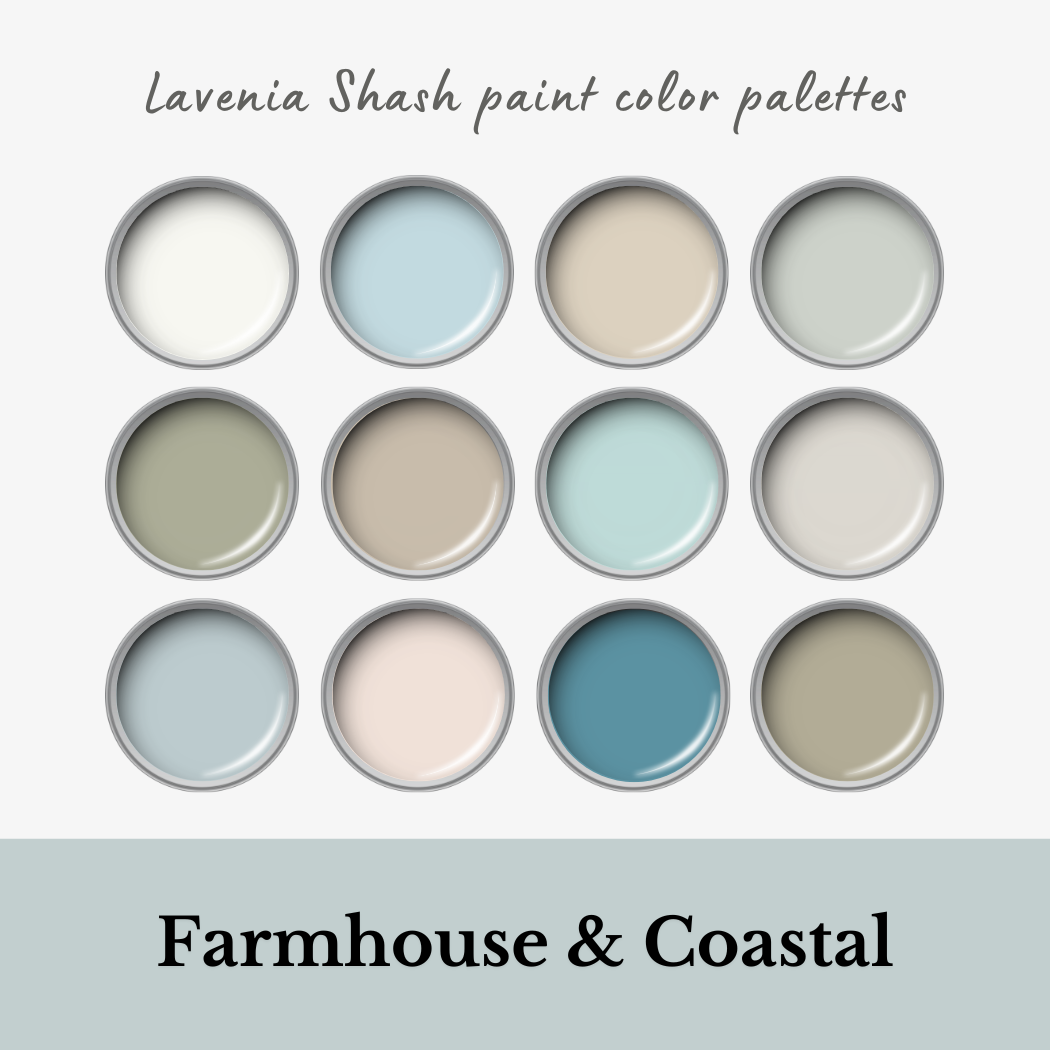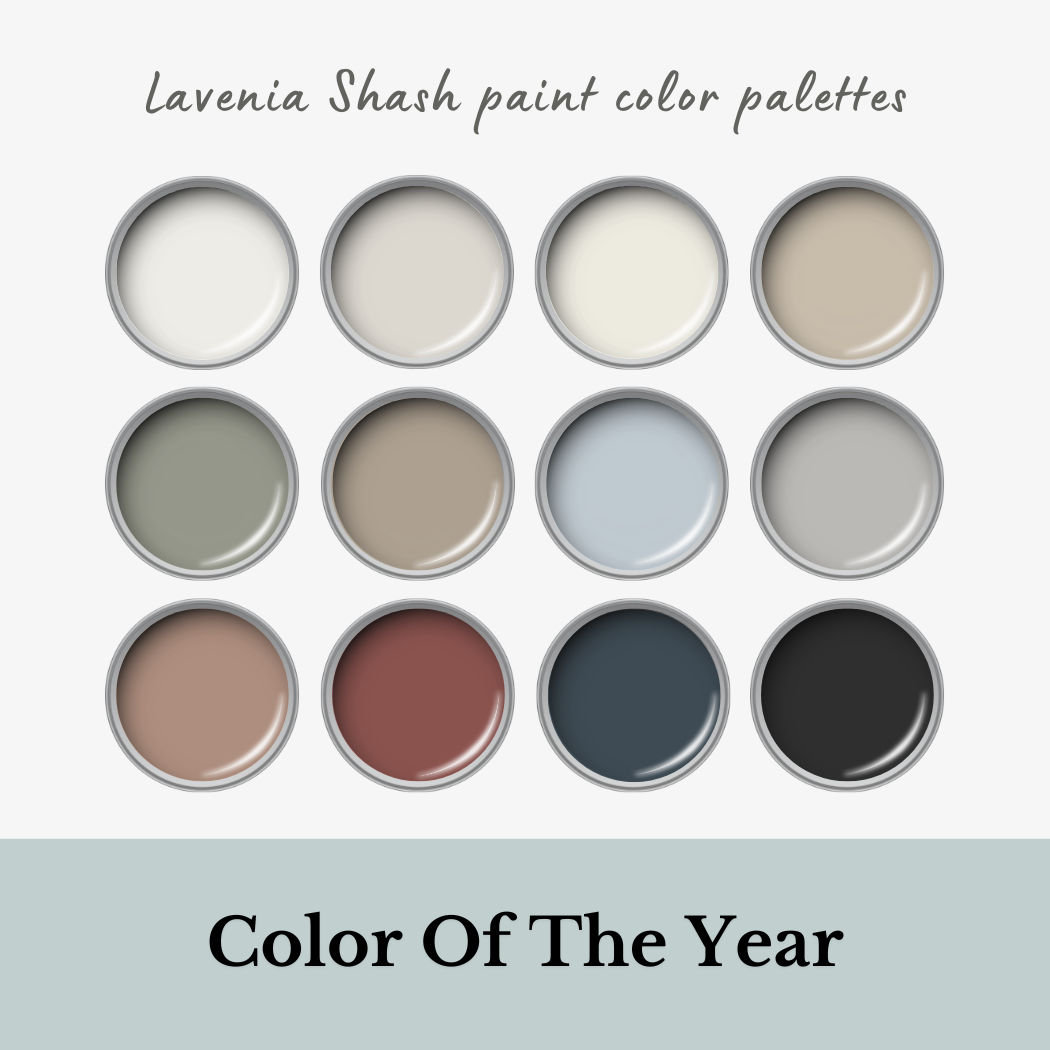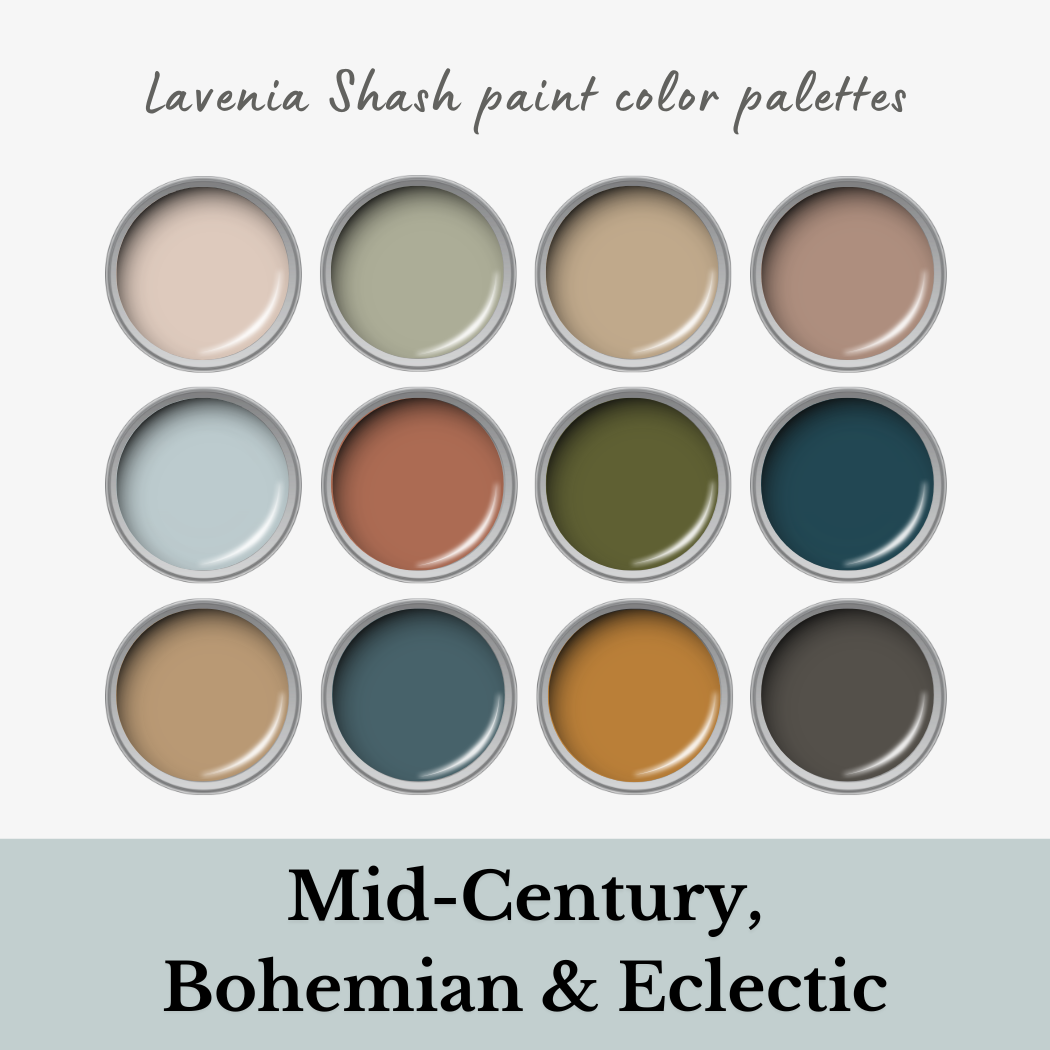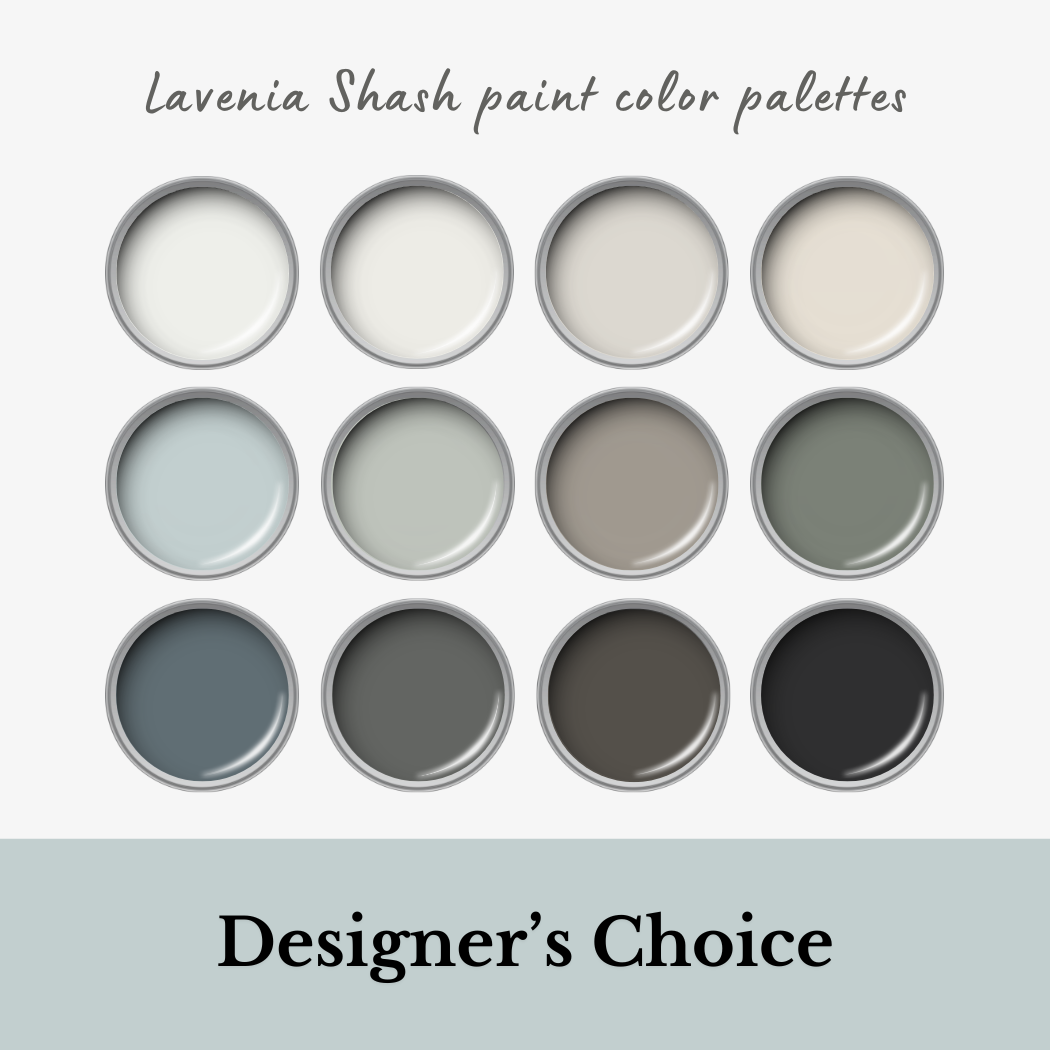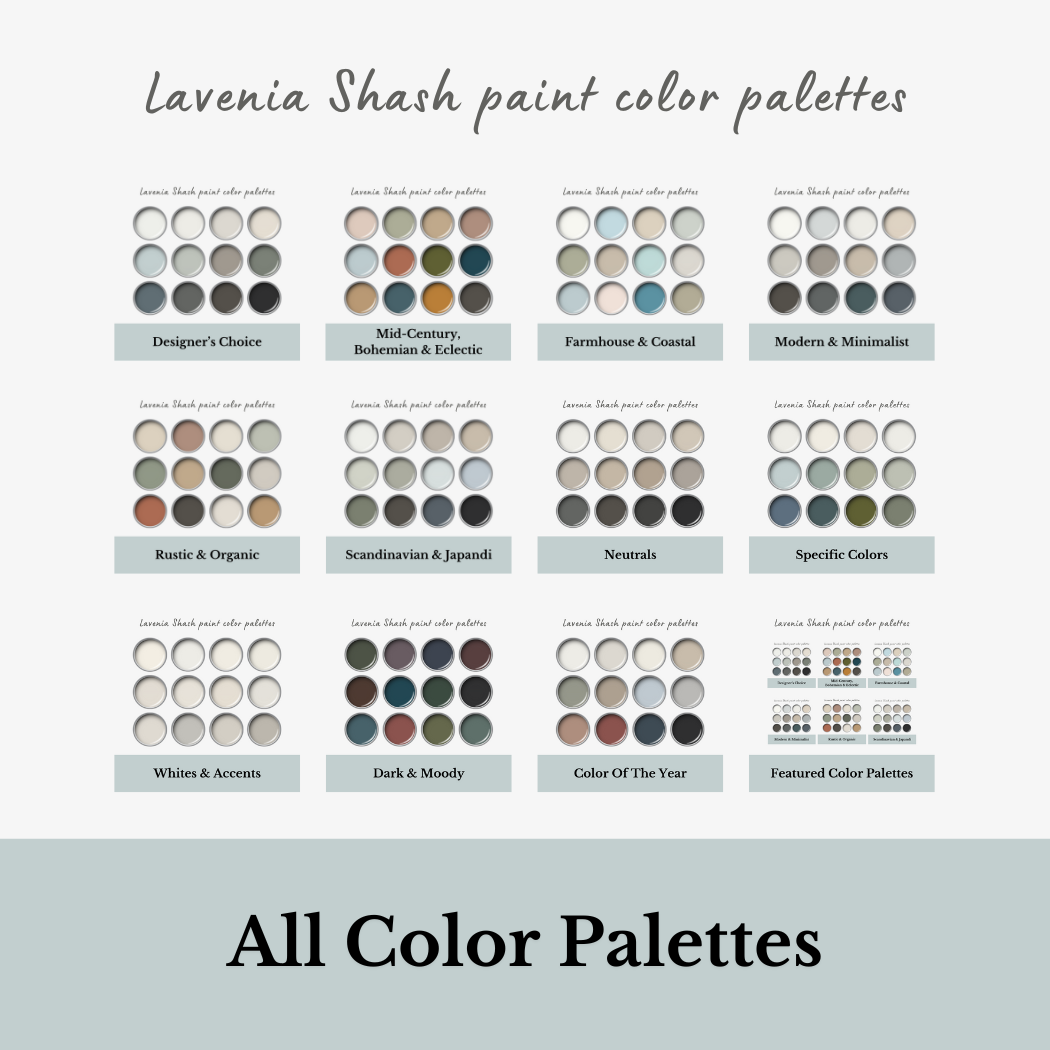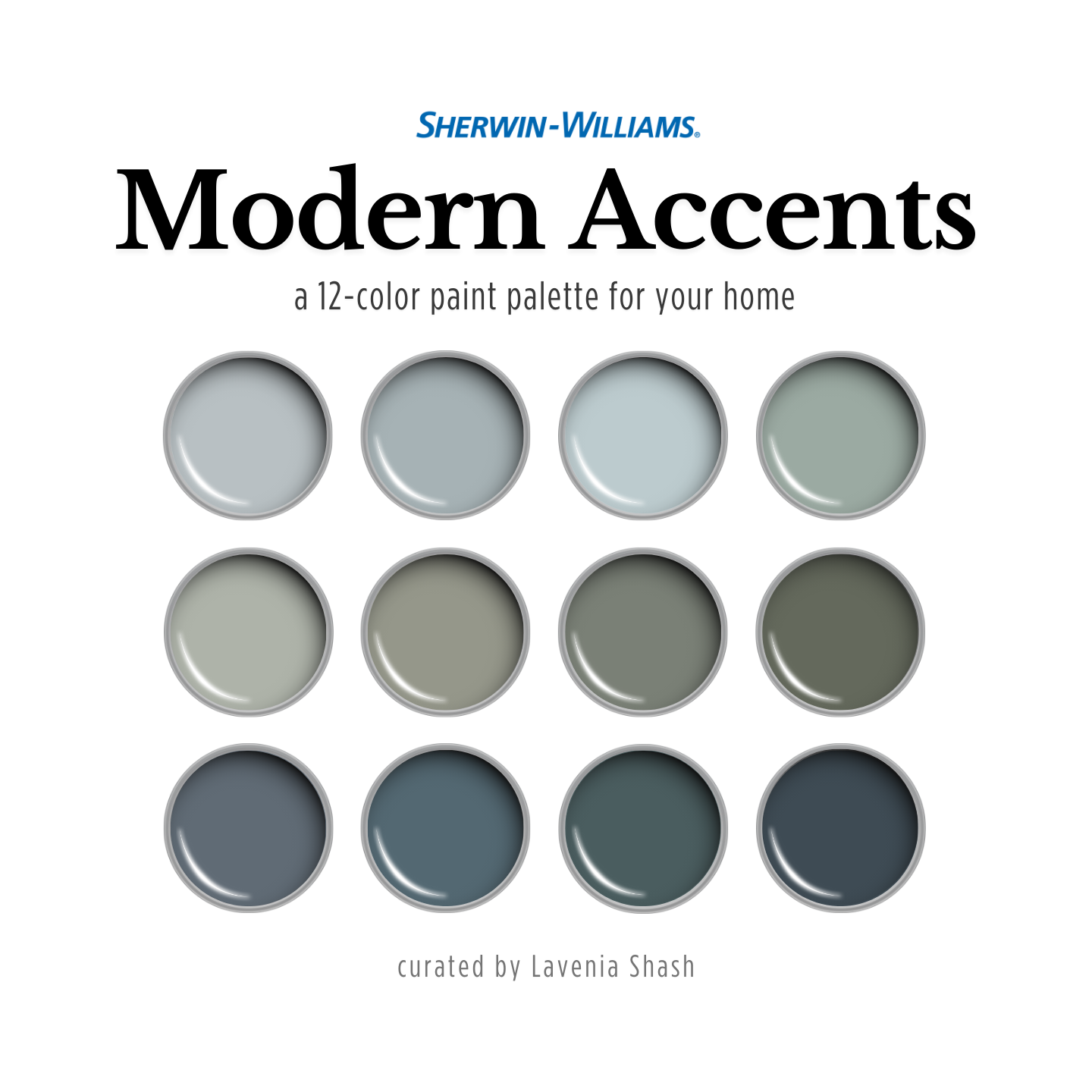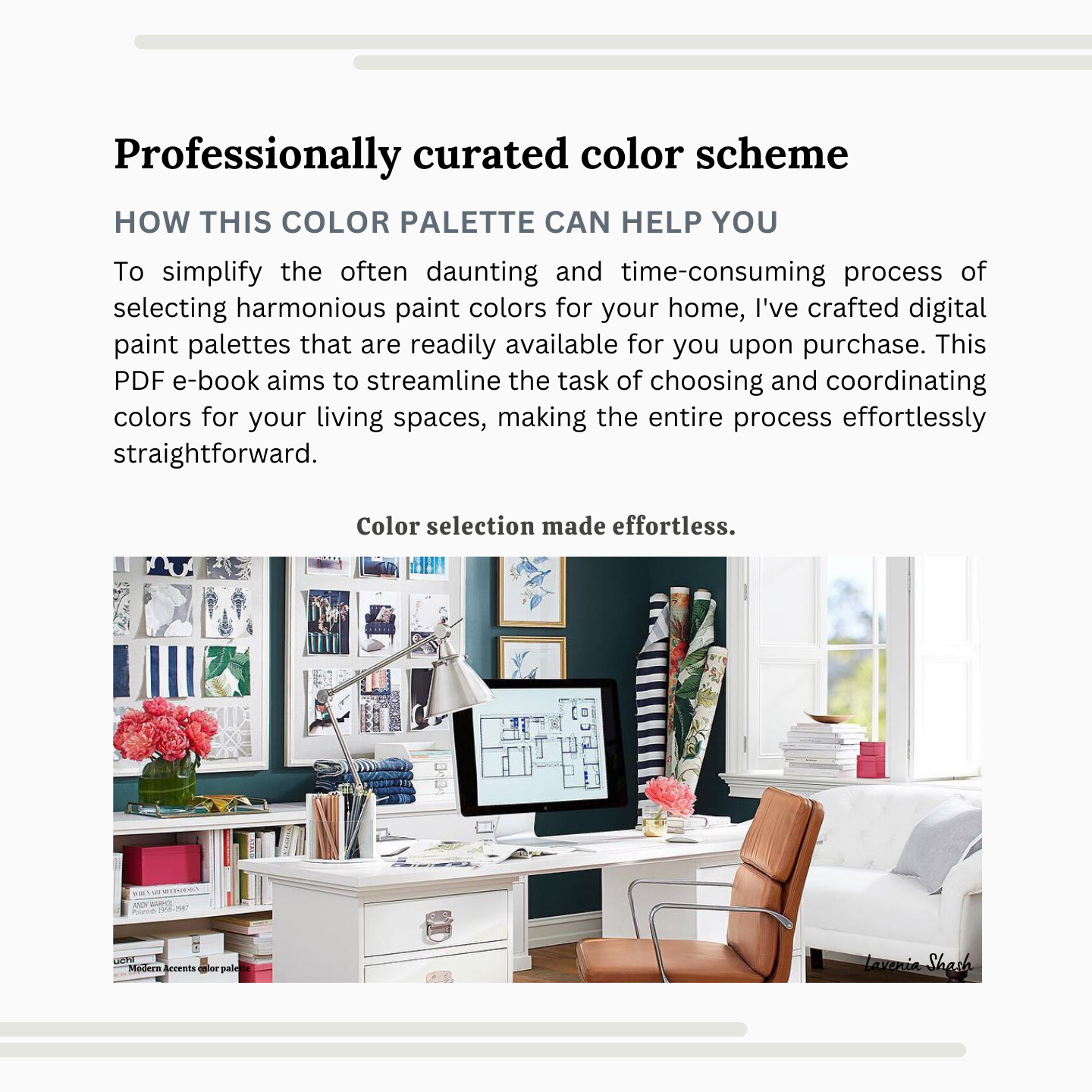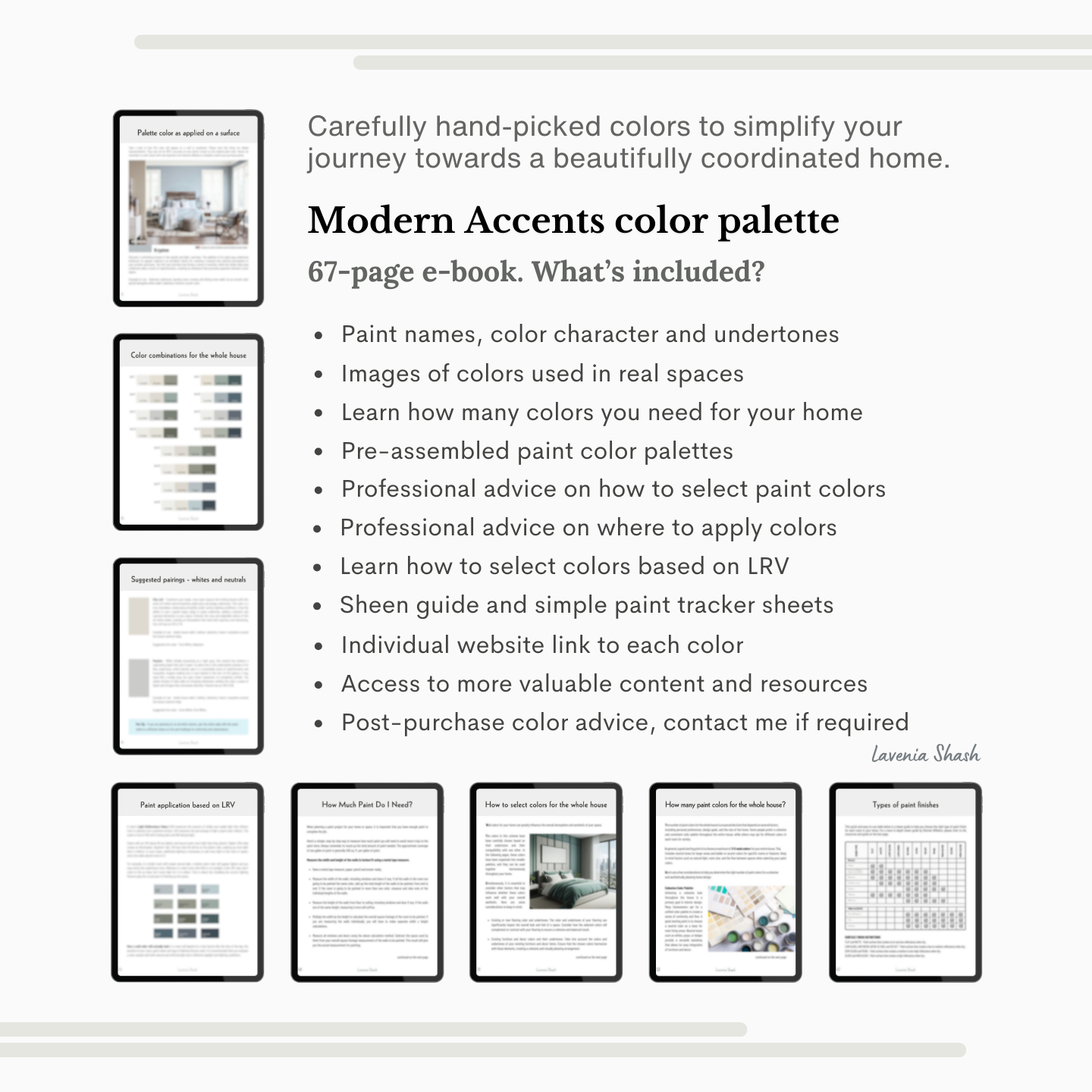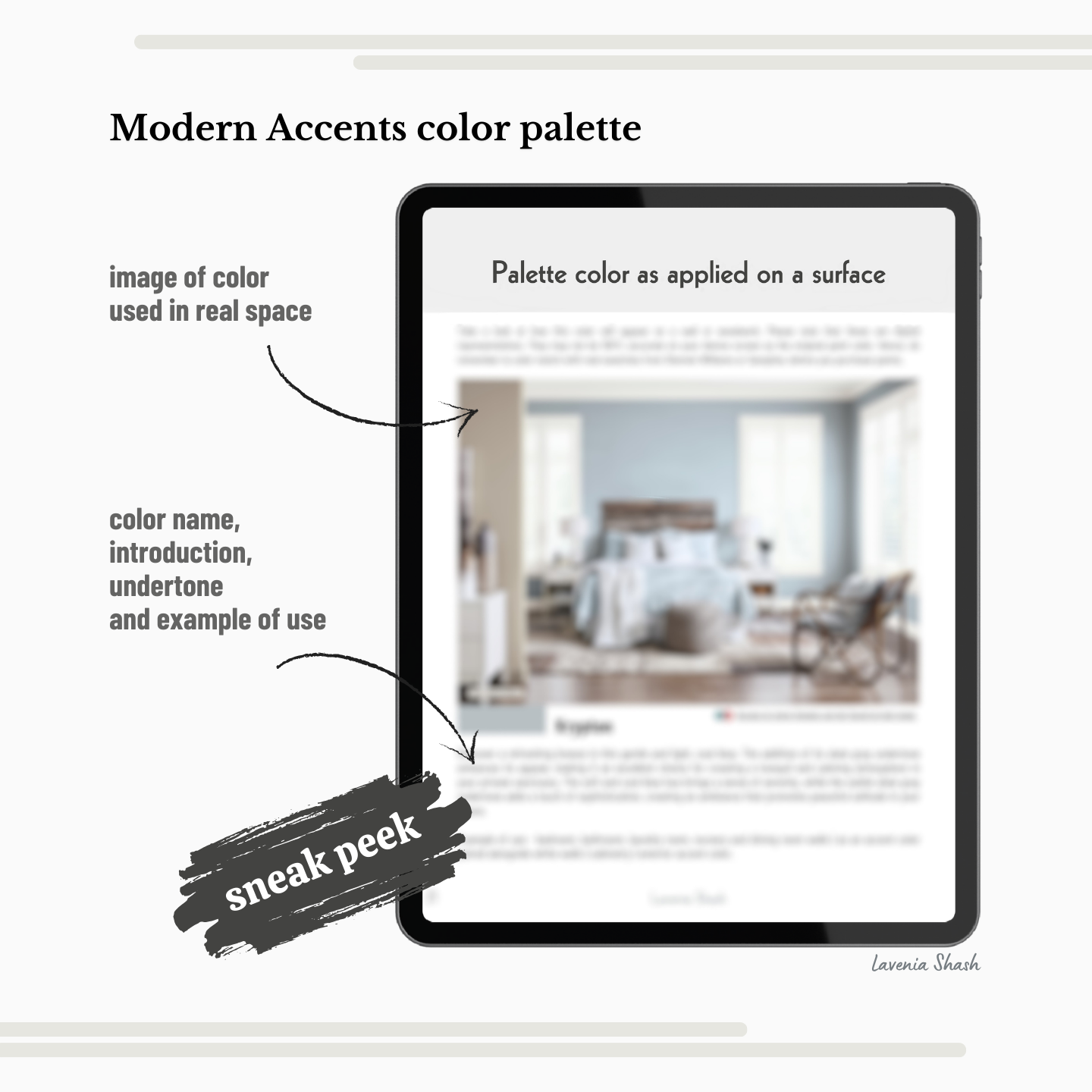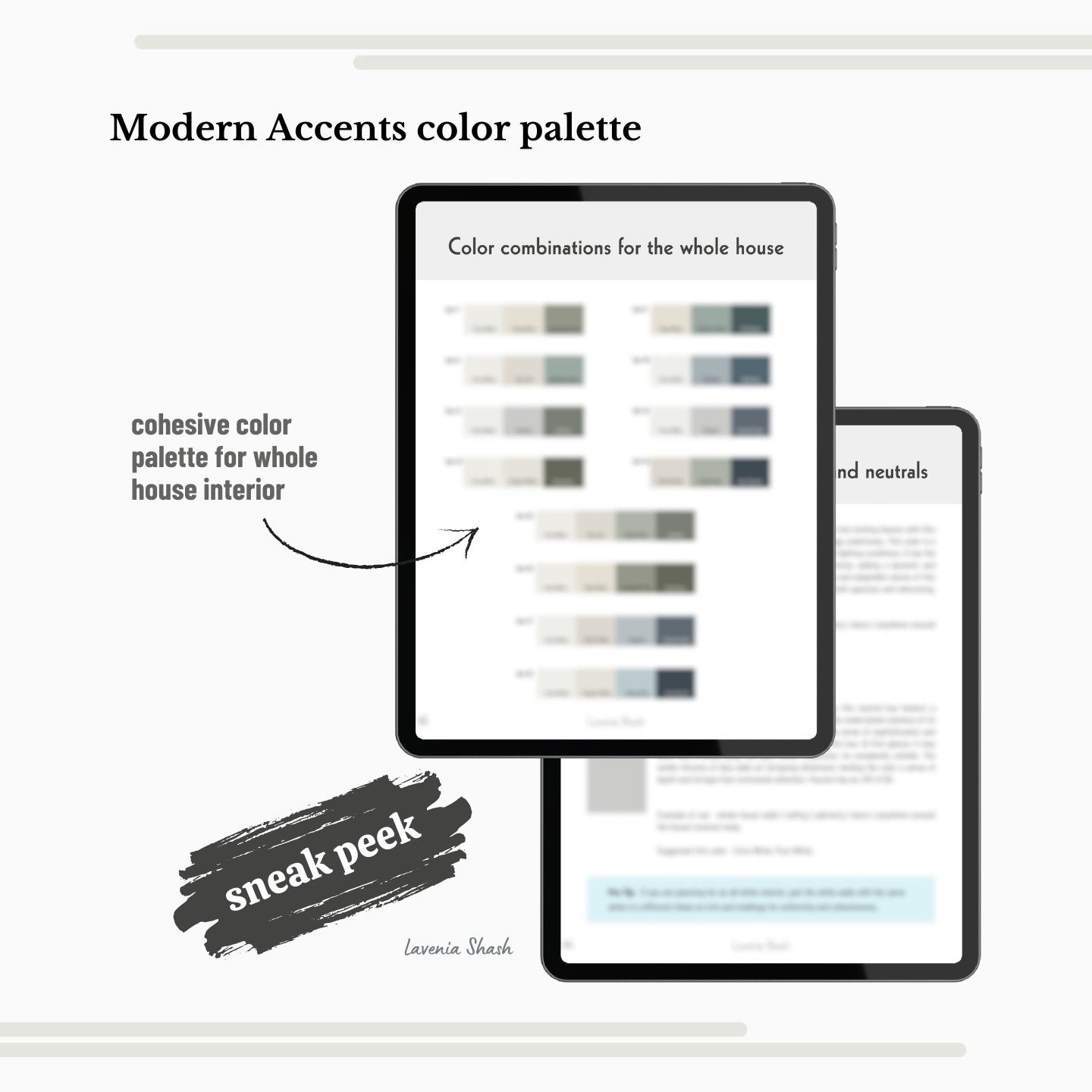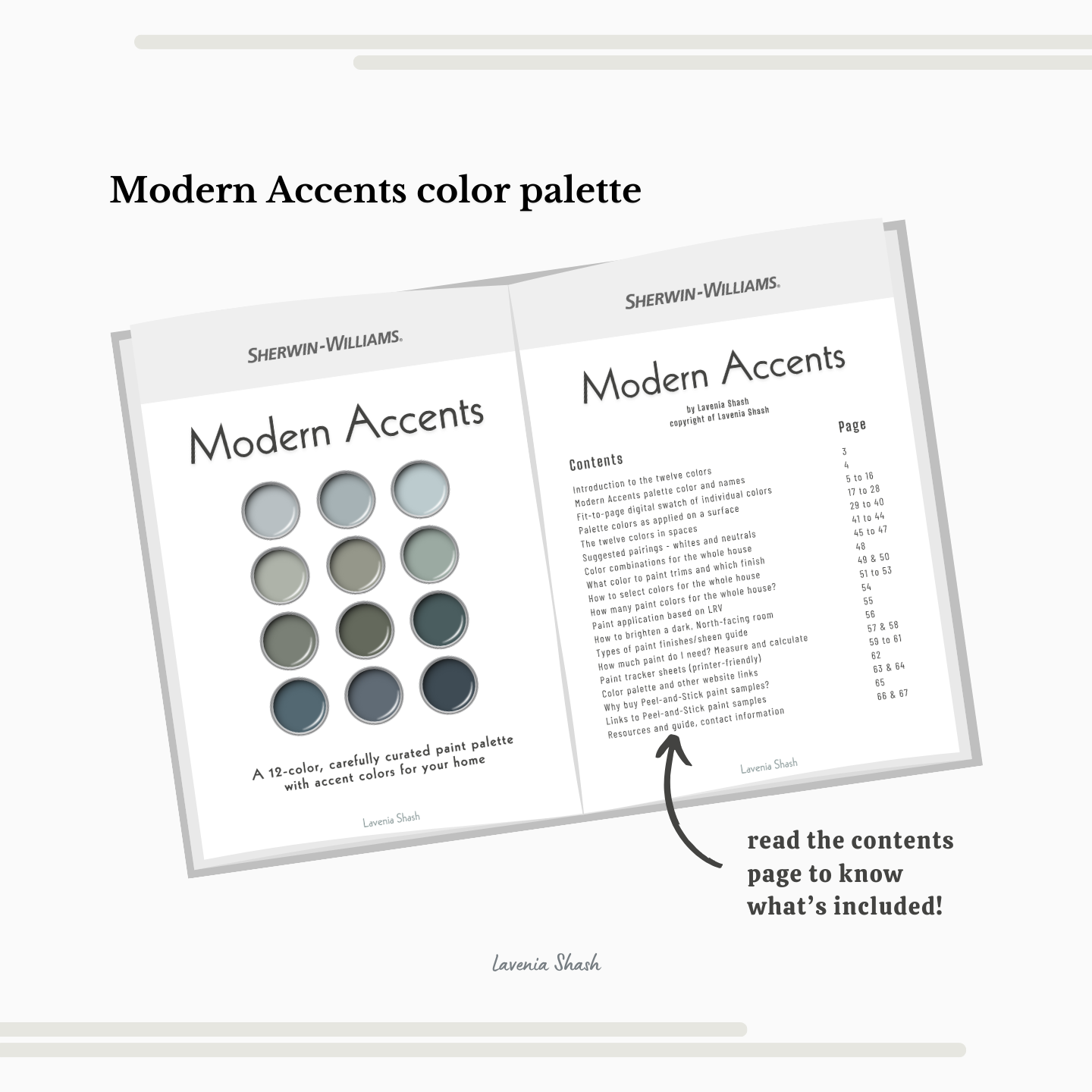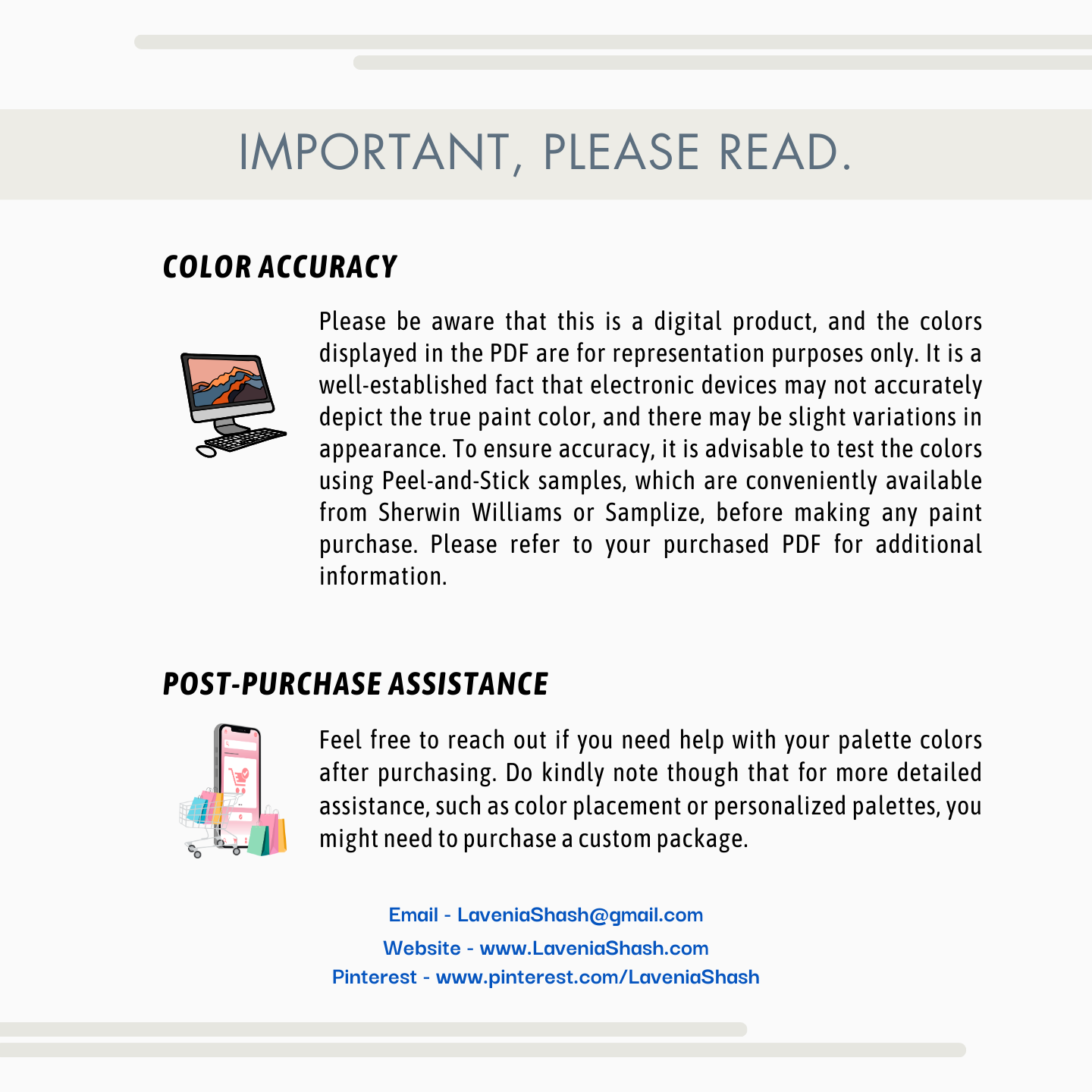

How To Choose An Accent Wall - a detailed guide with pictures.
Painting an accent wall is a fantastic way to transform the look and feel of a room. Whether you want to add a pop of color, create a focal point, or introduce a unique design element, an accent wall can instantly elevate the overall aesthetic of your space. This creative technique allows you to experiment with different colors, textures, and finishes, providing endless possibilities for personal expression and style.
Questions covered on this topic -
- What is an accent wall?
- Are there different types of accent walls?
- Where can you create an accent wall?
- How do you choose the right wall to highlight?
- Is it possible to have more than one accent wall in a room?
- Should an accent wall be lighter or darker than the rest of the room?
- Which wall to accent in an open concept layout?
- Which wall should be the accent wall in a living room?
- Which bedroom wall is best to accentuate?
- Which wall should be the accent wall in a kitchen?
- How about highlighting the ceiling instead?
- What are the dos and don'ts when painting an accent wall?
- What is the 60-30-10 rule in interior design?
What is an accent wall?
An accent wall is a specific wall within a room that is intentionally painted, decorated, or treated differently from the other walls. It serves as a focal point, drawing attention and adding visual interest to the space. The purpose of an accent wall is to create a striking and eye-catching element that enhances the overall design and ambiance of a room. The aim here is to introduce a splash of color or pattern and add personality to a room without overwhelming the entire space. An accent wall allows for creativity and customization, giving you the opportunity to express your style and make a statement within your home or any other interior setting.
Are there different types of accent walls?
There are various types of accent walls that you can create to add visual interest and personality to a room. The type of accent wall you choose depends on your personal style, the room's design, and the atmosphere you want to create. Each type offers a unique opportunity to add character and make a statement in your space. Here are some popular types of accent walls:

- Painted Accent Wall: This is the most common and versatile type of accent wall. You can choose a different color or shade of paint for the accent wall compared to the other walls in the room. It creates a bold contrast and can be customized to match your desired aesthetic.
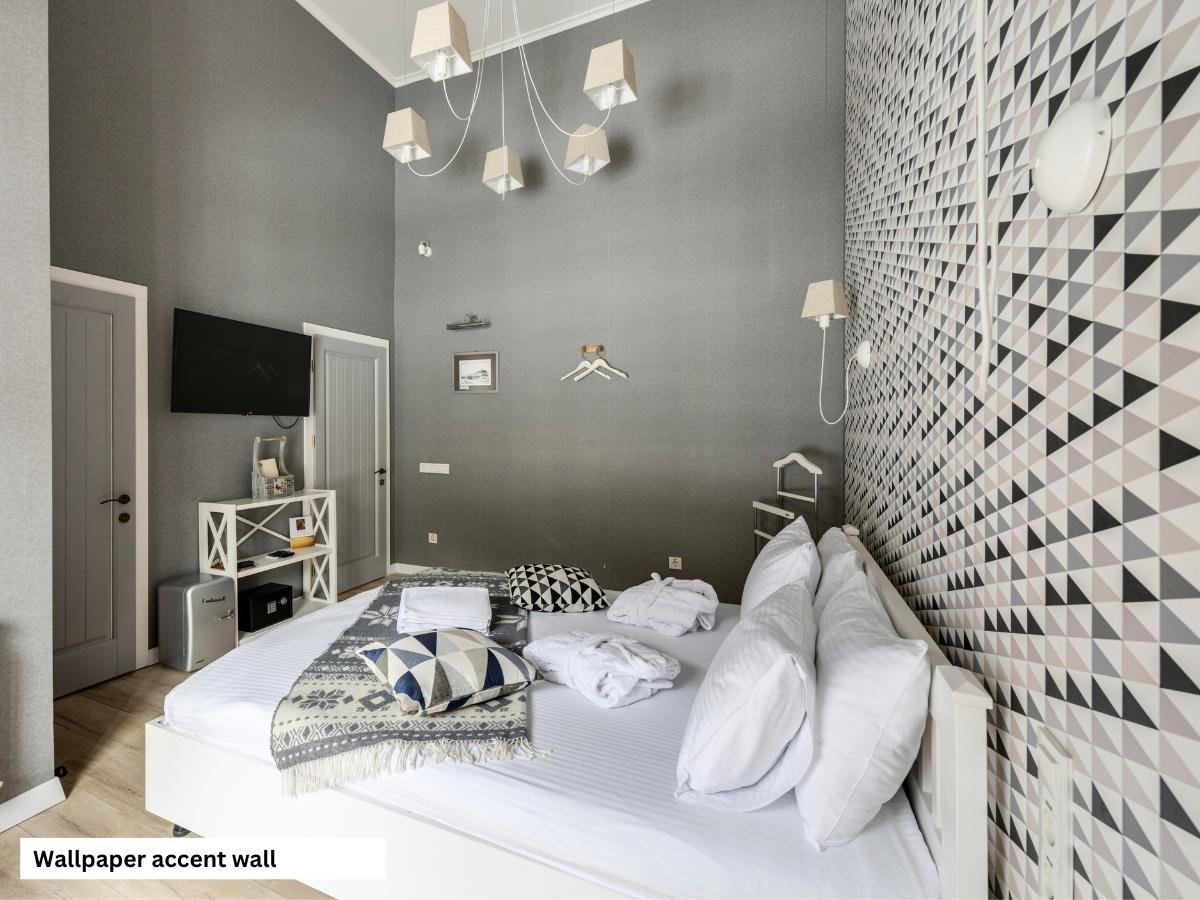
- Wallpaper Accent Wall: Wallpaper allows you to introduce patterns, textures, and intricate designs to your accent wall. From subtle geometric patterns to vibrant floral motifs, wallpaper accent walls can transform the atmosphere of a room and add a touch of elegance or playfulness.

- Textured Accent Wall: Adding texture to an accent wall can create a visually appealing focal point. Techniques such as stucco, faux finishes, or decorative wall panels can add depth and dimension to the wall, making it a captivating element in the room.

- Material Accent Wall: Using different materials on the accent wall can provide a distinct and tactile effect. Options include reclaimed wood, stone veneer, exposed brick, or even metal panels. These materials add texture, warmth, and a unique charm to the space.

- Mural or Artistic Accent Wall: Transform your accent wall into a work of art by incorporating a mural or hand-painted design. This type of accent wall allows for creative expression and can become a stunning centerpiece in the room.

- Shelving or Display Accent Wall: Turn your accent wall into a functional and decorative feature by adding floating shelves, built-in niches, or a gallery wall. This allows you to showcase artwork, photographs, books, or other personal items while adding depth and interest to the space.

- Architectural Accent Wall: Enhance existing architectural features on a specific wall, such as an exposed brick wall, an alcove, or a recessed area. Emphasizing these elements through lighting or highlighting their natural beauty can create a captivating accent wall.
Where can you create an accent wall?
An accent wall can be created in various areas throughout your home. You can get creative and experiment with accent walls in any space that you feel would benefit from a visually striking element. The key is to choose a location that allows the accent wall to shine and enhance the overall aesthetics of the room or space. Here are some common locations where you can have an accent wall:
- Living Room: Accentuate the wall behind the sofa or entertainment center to create a focal point in the room. This can help define the seating area and add visual interest.
- Bedroom: Consider accentuating the wall behind the bed to create a stunning backdrop. It can serve as a focal point and add depth and character to the space.
- Dining Room: Accentuate the wall behind the dining table to draw attention to this area and create an inviting atmosphere. It can enhance the overall dining experience and set the tone for your meals.
- Entryway/Hallway: Use an accent wall near the entrance or along a hallway to make a striking first impression. It can add personality and style to these transitional spaces.
- Home Office: Create an accent wall behind your desk to inspire creativity and productivity. Choose a color or pattern that resonates with your work style and enhances your focus.
- Nursery/Kids' Room: Add a playful touch by accentuating a wall with bright colors, whimsical patterns, or themed wallpaper. It can create a cheerful and stimulating environment for children.
- Bathroom: Transform your bathroom by accentuating a wall with unique tile patterns, textured finishes, or a bold color. This can elevate the overall look and create a spa-like ambiance.
- Kitchen: Consider accentuating a wall in the kitchen to break up the monotony of cabinetry or create a focal point near the dining area. Choose a color or material that complements the kitchen design.
How do you choose the right wall to highlight?
Choosing the right wall to accent is an important decision that can greatly impact the overall look and feel of your space. By considering these factors below, you can select the ideal wall to accentuate and create a visually stunning focal point within your space. Remember, there are no strict rules when it comes to choosing an accent wall, so trust your instincts and have fun exploring different possibilities.
- Focal Point: Identify the natural focal point of the room. This could be a fireplace, a large window, a piece of furniture, or any other element that draws attention. Accentuating the wall behind this focal point can enhance its prominence and create a visually appealing centerpiece. Do note though that a dark accent color surrounding windows can be overwhelming when bright light enters the room. It is best to stick to lighter shades for a wall that has large or numerous windows.
- Architecture: Consider the architectural features of the room. Is there a unique wall design, such as an alcove or a recessed area? Accentuating these architectural elements can add depth and character to the space.
- Room Size and Layout: Think about the size and layout of the room. If you have a small space, accentuating a shorter wall can make the room appear larger. Alternatively, in a larger room, accentuating a longer wall can create a sense of balance and harmony.
- Balance and Symmetry: Take into account the overall balance and symmetry of the room. If one side of the room feels heavier or visually dominant, accentuating the opposite wall can help create a more harmonious and balanced atmosphere.
- Practical Considerations: Consider the practical aspects of the wall. Is it a high-traffic area that may require frequent cleaning? If so, you might want to choose a wall that is less prone to scuffs and marks. Additionally, if there are obstructions on a particular wall, such as doors or windows, it may be more challenging to create a cohesive accent.
- Personal Preference: Ultimately, your personal preference and style should guide your decision. Consider the colors, patterns, and textures you are drawn to, and how they will complement the existing decor and color scheme of the room. Your accent wall should reflect your taste and create an atmosphere that resonates with you.
Is it possible to have more than one accent wall in a room?
Yes! It is possible to have multiple accent walls in a room or space. While traditionally, accent walls involve highlighting a single wall, there are instances where accentuating multiple walls can be visually appealing and create a unique design statement. They can add depth, character, and visual interest to a space. By carefully considering the factors mentioned below, you can create a dynamic and visually captivating environment that reflects your personal style and enhances the overall aesthetic of the room.
- Balance and Cohesion: Ensure that the multiple accent walls work together harmoniously and create a balanced composition within the room. Consider factors such as color coordination, pattern coherence, and overall aesthetic cohesion. The accent walls should complement each other and contribute to the overall design scheme.
- Visual Hierarchy: Establish a clear visual hierarchy among the multiple accent walls to guide the viewer's attention. Determine which walls should have greater prominence or impact. For instance, you might prioritize a larger accent wall as the main focal point and have smaller accent walls as secondary features.
- Room Layout and Function: Consider the room layout and how the multiple accent walls will interact with the furniture placement and overall flow of the space. Ensure that the accent walls do not disrupt the functionality of the room and allow for easy movement and functionality.
- Subtle Differentiation: If you opt for multiple accent walls, consider subtle differentiations to maintain a cohesive look. For example, you can use different shades of the same color, variations of a pattern, or textures that are complementary but not identical. This creates visual interest without overwhelming the space.
- Use of Accent Elements: Along with accent walls, you can also incorporate other accent elements in the room to tie the design together. This could include coordinating accent furniture, decorative accessories, or artwork that complements the accent walls and creates a cohesive visual narrative.
- Personal Style and Taste: As always, your personal style and taste should guide the decision. Consider your preferences and the overall aesthetic you wish to achieve. Experiment with different combinations and configurations to find the arrangement that resonates with you and enhances the room's design.
Should an accent wall be lighter or darker than the rest of the room?
When it comes to determining whether an accent wall should be lighter or darker than the rest of the room, there are no hard and fast rules. Ultimately, the decision of whether to choose a lighter or darker accent wall depends on your personal preference, the desired atmosphere, the overall ambiance you're aiming for and the specific characteristics of the room. Experiment with different shades, consider the factors mentioned below, and select a color that creates the visual impact and ambiance you envision for the space.
- Contrast: One common approach is to create contrast between the accent wall and the surrounding walls. If the rest of the room is painted in lighter shades, choosing a darker color for the accent wall can create a striking contrast and make it stand out. Conversely, if the room has darker walls, a lighter accent wall can provide a visually appealing contrast.
- Focal Point: If you want the accent wall to serve as a focal point in the room, selecting a color that stands out can be effective. A darker accent wall can draw attention and become the centerpiece, especially when paired with lighter surrounding walls.
- Visual Depth: Darker accent walls tend to create a sense of depth and coziness in a room. They can make the space feel more intimate and create a dramatic ambiance. Lighter accent walls, on the other hand, can make a room feel brighter, more open, and spacious.
- Room Size: Consider the size of the room. If the space is small, a lighter accent wall can help create the illusion of a larger area by reflecting light and making the room appear more expansive. In larger rooms, a darker accent wall can add depth and make the space feel cozier.
- Mood and Style: Think about the mood and style you want to evoke in the room. Darker accent walls tend to convey a sense of sophistication, drama, and intimacy. Lighter accent walls often create an airy, fresh, and modern feel. Consider how these moods align with the overall aesthetic you're trying to achieve.
- Existing Decor: Take into account the existing furniture, accessories, and color palette in the room. Ensure that the accent wall color harmonizes with the overall scheme and complements the surrounding elements.
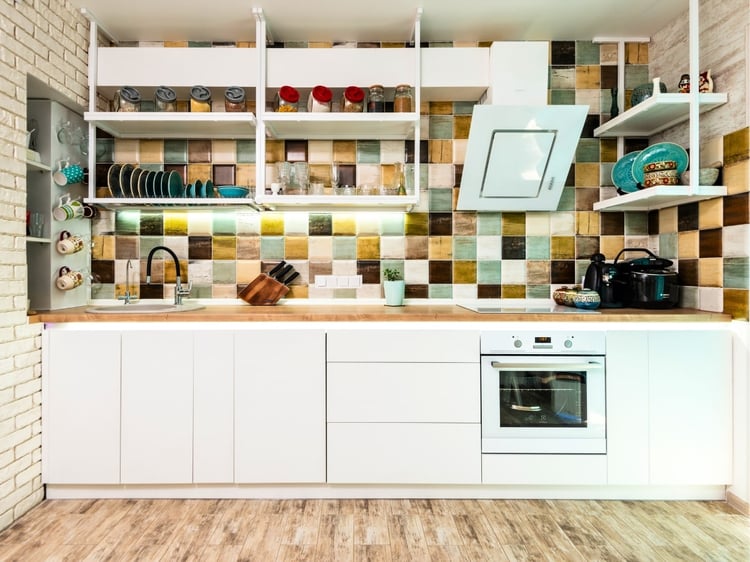
Square tiles in cohesive colors as an accent behind open shelving in this kitchen.
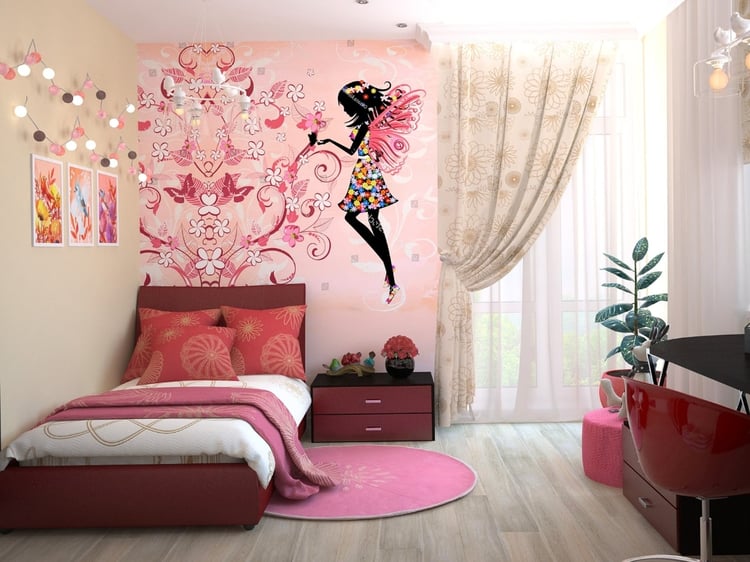
Pretty blush colored wallpaper for a girl's bedroom.
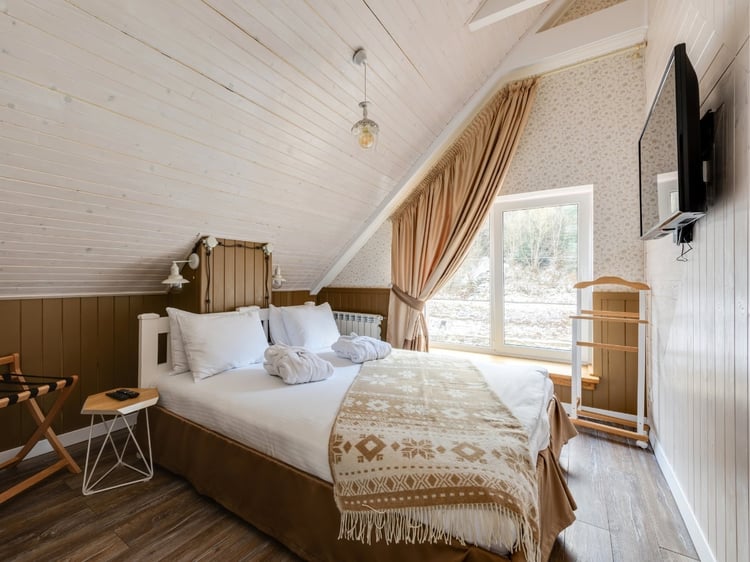
Light and neutral wallpaper on a window wall.
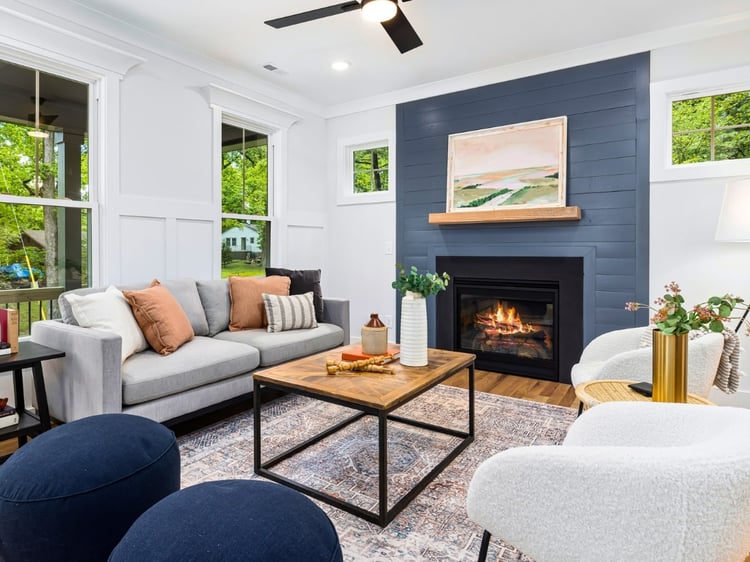
A muted blue fireplace wall.
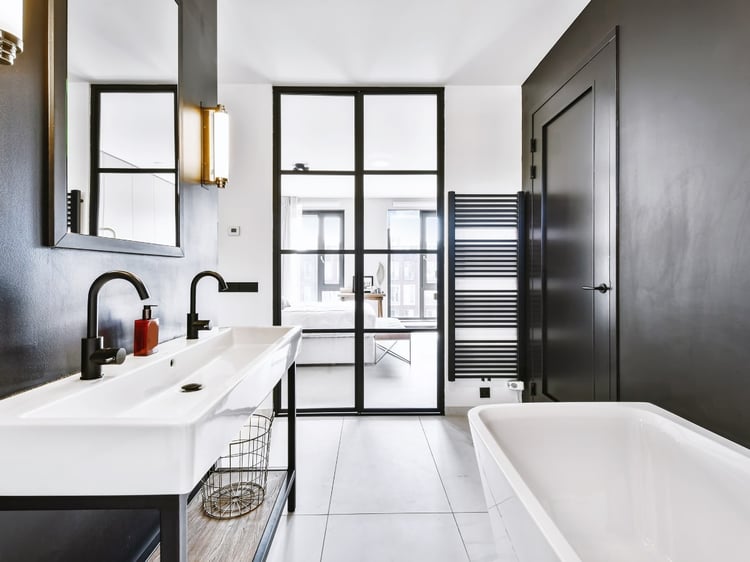
Two walls opposite each other painted in a stunning black.
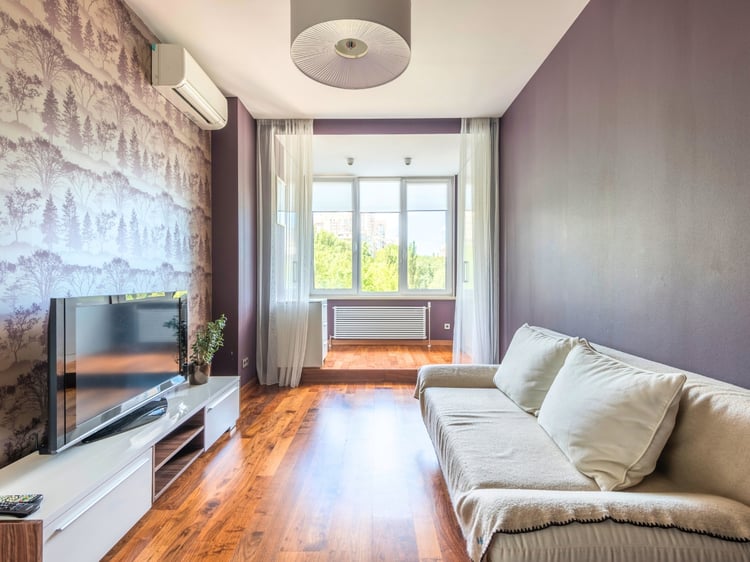
A light-colored wallpaper alongside and opposite dark walls.
Which wall to accent in an open concept layout?
In an open concept layout, where multiple areas flow seamlessly into one another, choosing the right wall for an accent wall can be a bit more challenging. An accent wall in an open floor plan should harmonize with the surrounding areas while adding visual interest and distinction. It should enhance the flow of the space and contribute to the overall unity and balance of the design. Take your time to assess the layout, consider the various factors mentioned here to help you decide, and choose the wall that best fits your vision for the open concept space.
- Focal Point: Look for a wall that naturally stands out or serves as a focal point in the space. This could be a wall with a fireplace, a large window, a unique architectural feature, or an area where the eye is naturally drawn to. Accentuating this wall can enhance its prominence and create a visual anchor for the open concept layout.
- Visual Separation: Consider using an accent wall to visually separate different functional areas within the open concept layout. For example, you could choose a wall to accentuate behind the dining area, distinguishing it from the living room or kitchen. This can help define each space while maintaining a cohesive design.
- Balance and Symmetry: Select a wall that helps achieve balance and symmetry within the open concept layout. If one side of the space feels heavier or visually dominant, accentuating the opposite wall can help create a more harmonious overall composition.
- Traffic Flow: Take into account the flow of traffic within the space. Avoid choosing an accent wall that may disrupt the natural movement or obstruct pathways. Opt for a wall that allows for easy circulation and doesn't create visual or physical barriers.
- Lighting Considerations: Assess the natural and artificial lighting in the open concept area. Choose a wall that can benefit from the play of light and shadows or a wall that can be accentuated with strategically placed lighting fixtures to enhance its visual impact.
- Personal Preference: Ultimately, consider your personal preference and the overall design aesthetic you wish to achieve. Select a wall that resonates with your style and complements the existing decor and color scheme in the open concept layout.
Which wall should be the accent wall in a living room?
When choosing which wall in a living room to use as an accent wall, several factors should be considered. There are no strict rules for selecting an accent wall in a living room. It's important to consider the unique characteristics of your space and how the accent wall will interact with other elements in the room. By carefully evaluating these factors, you can choose the best wall to accentuate and create a visually captivating and harmonious living room design. Here are some considerations to help you determine the best wall for an accent in a living room:
- Focal Point Wall: Consider selecting a wall that naturally draws attention or serves as a focal point in the living room. This could be a wall with a fireplace, a large window, a built-in shelving unit, or an area where the eye is naturally drawn to. Accentuating this wall can enhance its prominence and create a visual centerpiece for the room.
- TV Wall: If you have a television in the living room, the wall behind it can be a suitable choice for an accent wall. By highlighting this wall, you can create a dedicated space for entertainment and make the TV area visually appealing.
- Back Wall: Choosing the wall that is opposite the main entrance to the living room can create a dramatic effect. This placement draws attention as soon as you enter the room and provides a striking backdrop for the space.
- Architectural Feature Wall: If your living room has unique architectural features, such as exposed brick, a textured wall, or decorative moldings, consider accentuating those walls. By highlighting these features, you can add character and visual interest to the room.
- Symmetry and Balance: Assess the layout of your living room and strive for balance. If one side of the room feels heavier or visually dominant, consider accentuating the opposite wall to create a sense of symmetry and harmony.
- Personal Preference and Design Style: Ultimately, the choice of accent wall in a living room should reflect your personal taste and design style. Consider the color scheme, furniture arrangement, and existing decor in the room. Choose a wall that complements the overall aesthetic and contributes to the desired ambiance.
Which bedroom wall is best to accentuate?
When choosing which wall in a bedroom to use as an accent wall, there are a few factors to consider. Evaluate how the accent wall will interact with other elements, such as furniture placement, lighting, and existing decor. Ultimately, the goal is to choose a wall that enhances the overall design, creates a focal point, and adds visual interest and personality to your bedroom. Here are some considerations to help you determine the best wall for an accent in a bedroom:
- Headboard Wall: The wall behind the headboard is a popular choice for an accent wall in a bedroom. It creates a focal point and draws attention to the bed, which is often the main feature in the room. Accentuating this wall can enhance the overall design and add a sense of luxury and style.
- Opposite Wall: Selecting the wall opposite the entry point of the bedroom can create a dramatic effect. When you enter the room, your gaze will be immediately drawn to the accent wall, making a strong visual impact. This placement can also help balance the space and provide a striking backdrop for the room's main elements.
- Niche or Alcove Wall: If your bedroom has any built-in niches, alcoves, or architectural features, consider accentuating those walls. These areas naturally stand out, and accentuating them can enhance their visual appeal and add depth and character to the room.
- Fireplace Wall: If your bedroom has a fireplace, it can serve as an excellent choice for an accent wall. Highlighting this wall can draw attention to the fireplace and create a cozy and inviting atmosphere.
- Window Wall: Accentuating the wall with a large window can create a stunning effect, especially if you have a beautiful view or if the window itself is an architectural feature. By painting or decorating this wall differently, you can frame the view or make the window the focal point of the room. However, be mindful that a dark accent color surrounding windows can create a bright light effect and overwhelm the room.
Which wall should be the accent wall in a kitchen?
In a kitchen, the choice of which wall to make the accent wall depends on several factors. Consider the layout, existing features, and your personal design preferences when selecting the accent wall in a kitchen. Think about how the accent wall will interact with other elements like cabinets, appliances, and countertops. The goal is to choose a wall that enhances the overall design, creates a focal point, and adds visual interest to your kitchen space. Here are some considerations to help you determine the best wall for an accent in a kitchen:
- Backsplash Wall: The wall behind the stove and countertop area is a popular choice for an accent wall in a kitchen. This wall is often referred to as the backsplash wall, and accentuating it can create a focal point and add visual interest to the cooking area. You can use different materials, such as tiles, glass, or even paint, to create a stunning backsplash that stands out.
- Sink Wall: Another option is to make the wall behind the kitchen sink the accent wall. This can help draw attention to the sink area and make it a visually appealing feature in the kitchen. Consider using a unique tile pattern, textured wallpaper, or a contrasting paint color to make this wall stand out.
- Island Wall: If your kitchen has an island, you can consider making the wall behind it the accent wall. This can help define the island as a focal point and create a visually striking centerpiece. You can use a different material, pattern, or color on this wall to make it stand out from the surrounding walls.
- Cabinet Wall: In some kitchens, the wall where the cabinets are installed can make an excellent accent wall. By using a different color or finish on this wall, you can create contrast and make the cabinets pop. It can add depth and visual interest to the overall kitchen design.
- Entrance Wall: If your kitchen has a separate entrance or an open concept layout where it blends with other areas, such as the dining or living room, consider making the wall near the entrance the accent wall. This can help define the kitchen area and create a visually distinct boundary.












How about highlighting the ceiling instead?
Using the ceiling, also known as the fifth wall, as an accent can be a bold and creative choice that adds a unique touch to a room. When attempting to do so, consider the overall color scheme of the room and how the ceiling will interact with the walls, furniture, and other elements. It's important to strike a balance and ensure that the ceiling color complements the rest of the room while making a distinct statement. Experiment with different color and material options and observe how the accent on the ceiling transforms the space. Here are some considerations and effects of using the ceiling as the accent:
- Highlighting Architectural Features: If your room has interesting architectural details on the ceiling, such as beams, coffered designs, or unique molding, using an accent color on the ceiling can draw attention to these features and make them stand out. It can add depth and character to the space.
- Creating Height and Drama: Painting the ceiling in a bold or contrasting accent color can create a dramatic effect and make the room feel more expansive. A darker accent color on the ceiling can create a sense of depth, while a lighter color can visually raise the ceiling and add an airy feel.
- Framing the Space: By using an accent color on the ceiling, you can create a frame or canopy-like effect, especially in rooms with high ceilings. This can add a sense of coziness and intimacy to the space, making it feel more inviting.
- Accentuating Open Floor Plans: In open floor plans where multiple areas flow together, using an accent color on the ceiling can help define different zones or areas within the space. It visually separates areas such as the living room, dining area, or kitchen, adding interest and delineation.
- Enhancing a Theme or Style: Using an accent color on the ceiling can contribute to the overall theme or style of the room. For example, in a tropical-themed room, a vibrant blue or green ceiling can mimic the sky or create a canopy effect. In a contemporary space, a contrasting or metallic accent color on the ceiling can add a touch of modernity.

What are the dos and don'ts when painting an accent wall?
When painting an accent wall, it's important to keep a few dos and don'ts in mind to ensure a successful and visually pleasing result. By keeping these dos and don'ts in mind, you can approach your accent wall painting project with confidence and achieve a stunning result that enhances the overall aesthetic of your space. Here are some helpful guidelines:
Dos:
- Do consider the color scheme: Choose a color that complements the existing color palette of the room. Take into account the furniture, accessories, and overall ambiance you want to achieve.
- Do test the color: Before committing to a color, test it on a small section of the wall, create a sample board or purchase Peel-and-Stick sample swatches. This allows you to see how the color looks in different lighting conditions and how it interacts with the other elements in the room.
- Do prepare the wall properly: Clean the wall thoroughly, repair any imperfections such as cracks or holes, and apply a suitable primer if needed. Proper wall preparation ensures better paint adhesion and a smoother finish.
- Do protect surrounding areas: Cover the floor, furniture, and any other nearby objects with drop cloths or plastic sheets to prevent accidental paint splatters or spills. Use painter's tape to protect trim, baseboards, and adjacent walls.
- Do use quality painting tools: Invest in high-quality brushes, rollers, and other painting tools. Good tools make the application process easier and help achieve a more professional-looking finish.
- Do apply multiple coats if necessary: Depending on the color and the desired opacity, you may need to apply multiple coats of paint. Follow the manufacturer's instructions and allow sufficient drying time between coats.
- Do remove tape properly: After the paint has dried, carefully remove the painter's tape at a 45-degree angle to ensure clean, crisp lines. Remove the tape before the paint is fully cured to prevent peeling or chipping.
Don'ts:
- Don't choose a color on a whim: Take the time to consider your color choice carefully. Rushing into a decision may result in a color that clashes with the rest of the room or doesn't achieve the desired effect.
- Don't neglect wall preparation: Skipping proper wall preparation can lead to issues such as poor adhesion, uneven texture, or paint peeling. Take the time to clean and prepare the wall adequately before painting.
- Don't rush the drying process: Allow sufficient drying time between coats and before removing tape or making any touch-ups. Rushing the process can lead to smudging, smearing, or uneven color distribution.
- Don't overlook ventilation: Ensure proper ventilation in the room while painting. Open windows or use fans to promote air circulation and help paint fumes dissipate more quickly.
Don't neglect to blend the edges: When painting an accent wall, ensure that the edges blend seamlessly with the adjacent walls. Use a technique called feathering, which involves lightly extending the paint onto the adjacent walls, to create a smooth transition.
What is the 60-30-10 rule in interior design?
The 60-30-10 rule is a guideline commonly used in interior design to achieve a balanced and harmonious color scheme within a space. However, it's important to note that the 60-30-10 rule is not a strict requirement, but rather a guideline. You can adjust the proportions based on your personal preference and the specific needs of the room. The rule, which suggests dividing the colors used in a room into three proportions, is intended to provide a starting point and a framework for achieving a well-balanced color scheme in interior design.
- 60% Dominant Color: The dominant color should cover approximately 60% of the room and serve as the primary color in the design. This color is typically applied to the walls, large furniture pieces, or the main elements of the room. It sets the overall tone and provides a backdrop for the other colors.
- 30% Secondary Color: The secondary color should make up around 30% of the room and complement the dominant color. This color is often used for upholstery, curtains, or additional furniture pieces. It adds visual interest and helps create a cohesive look.
- 10% Accent Color: The accent color makes up approximately 10% of the room and is used sparingly for small decorative items or accessories. It provides pops of color and adds excitement and personality to the space. This can be achieved through throw pillows, artwork, rugs, or other decorative accents.
Following the 60-30-10 rule helps create a balanced and visually pleasing color palette by allowing for variation and contrast while maintaining a sense of harmony. It prevents overwhelming the space with too many colors or creating a monotonous look by relying solely on one color.
However, it's important to note that the 60-30-10 rule is not a strict requirement, but rather a guideline. You can adjust the proportions based on your personal preference and the specific needs of the room. The rule is intended to provide a starting point and a framework for achieving a well-balanced color scheme in interior design.
Finally, trust your instincts and have fun!!
In conclusion, an accent wall can be a fantastic way to add personality, depth, and visual interest to a room. Whether you're painting an accent wall or using other materials like wallpaper or textured finishes, it's important to consider the overall design of the space, your personal style, and the desired effect you want to achieve.
Experiment with different ideas, consider the existing elements in the room, and select colors and placements that resonate with your personal style. An accent wall can be a powerful design element that transforms a room and adds a touch of creativity and individuality to your living space.
Meanwhile...
If you are looking for paint colors for your home or space, check this out..
Choosing paint colors for your home can indeed be a challenging task. However, I'm here to simplify the process for you. Introducing my carefully curated paint palettes, designed to offer complementary, and coordinating colors suitable for various areas within your home.
The thoughtfully chosen set of colors in every paint palette ensure a harmonious and unified look throughout your home, allowing for seamless transitions between different areas while maintaining a cohesive overall aesthetic. Whether you're looking to refresh a single room or create a consistent theme across your entire living space, my paint palettes offer versatile and stylish solutions.
I have dedicated significant time and effort to curate each comprehensive, digital download PDF guide that showcases a collection of meticulously selected colors. Every color has been hand-picked with careful consideration of their undertones and compatibility, ensuring they work harmoniously together to create a cohesive and visually pleasing palette.
By providing you with professional advice and tips through informative PDFs, I aim to streamline your decision-making process and provide you with valuable resources that simplifies your journey towards a beautifully coordinated home.
With my expertise, I have assisted countless clients in uncovering paint colors that truly resonate with them. I am eager to extend my assistance to you as well, ensuring that you discover the perfect palette that brings joy and satisfaction to your space.
Should you have any questions about the colors prior to purchase, please get in touch with me by filling in the contact form.
I am reachable for advice post-purchase too!
Much success,
Lavenia Shash
All written content is the copyright of Lavenia Shash. Lavenia is a qualified interior and graphic designer. With a profound expertise, she excels in the art of creating cohesive and harmonious color schemes that perfectly suit both homes and individual styles.
Presenting "Modern Accents," a meticulously curated color palette featuring twelve sophisticated hues from Sherwin Williams. Ranging from serene medium-light tones to stunning dark shades, this palette offers a contemporary and stylish approach to interior design.
Comprising blues, green-blues, blue-greens, and greens, these colors are perfect for accentuating various elements in your space. Whether it's accent walls, feature walls, fireplace walls, cabinets, doors, or even exterior surfaces, the versatility of these shades knows no bounds.
To ensure seamless integration into your home, the palette includes cohesive white and neutral color suggestions. These options can be used for trim, frame, baseboard, molding, ceiling, and primary wall colors throughout the entire house, providing a cohesive and unified look.
To assist you in bringing your vision to life, I've included expert color pairing suggestions. Let your imagination soar as you explore the transformative possibilities of Sherwin Williams' "Modern Accents" palette, where each hue is carefully chosen to inspire and delight.
More than just a collection of colors, the palette transcends simplicity, offering versatility tailored to a myriad of interior design styles. Whether you're drawn to Farmhouse, Coastal or Beach House, Contemporary, Modern Minimalist, Scandinavian, Industrial, Japandi, or any other style, these hues seamlessly adapt to complement your aesthetic vision.
While my color palettes are designed with interior spaces in mind, their versatility allows for confident extension to exterior applications as well. Though the emphasis lies on interior design, the adaptable nature of the colors ensures they seamlessly transition from walls to cabinets to exterior surfaces, radiating timeless elegance throughout both indoor and outdoor areas.
HOW THIS PDF BOOK CAN HELP YOU
Choosing the right paint colors that will work together can be overwhelming and time-consuming. In an attempt to make finding colors that will work together less complicated and confusing for you, I have created these digital paint palettes that you can have immediate access to upon purchase. The objective of this PDF e-book is to make selecting and pairing colors for your home and space a breeze.
As you would have already known, Sherwin Williams has a huge range of gorgeous colors. As such, many hours were spent on research and comparison, to narrow the colors down and create a palette with hues that complement one another. These color schemes and all the useful information that comes with each E-book have been a huge help to my customers and clients, and I am positive they will benefit you too.
Please feel absolutely free to contact me if you have any questions prior to, or post purchase.
NOTE: This is an instant, digital download. Nothing will be shipped to you.
67-PAGE PDF BOOK CONTENTS
* Introduction to the twelve colors
* Modern Accents palette color and names
* Fit-to-page digital swatch of individual colors
* Palette colors as applied on a surface
* The twelve colors in spaces
* Suggested pairings - whites and neutrals
* Color combinations for the whole house
* What color to paint trims and which finish
* How to select colors for the whole house
* How many paint colors for the whole house?
* Paint application based on LRV
* How to brighten a dark, North-facing room
* Types of paint finishes/sheen guide
* How much paint do I need? Measure and calculate
* Paint tracker sheets (printer-friendly)
* Color palette and other website links
* Resources and guide, contact information
THINGS TO NOTE
- Downloads are available soon after your payment is confirmed.
- You will receive an email with a download link.
- No refunds due to the nature of the instant digital download. However, please contact me about any issues with your order.
- This purchase is for personal use only and may not be used for commercial purposes.
- All paint color palettes purchased is copyright of Lavenia Shash.
Lavenia Shash
Email - laveniashash@gmail.com
Like to view more color schemes?
TAKE ME TO SHOP!
For admin use - LS No.11


